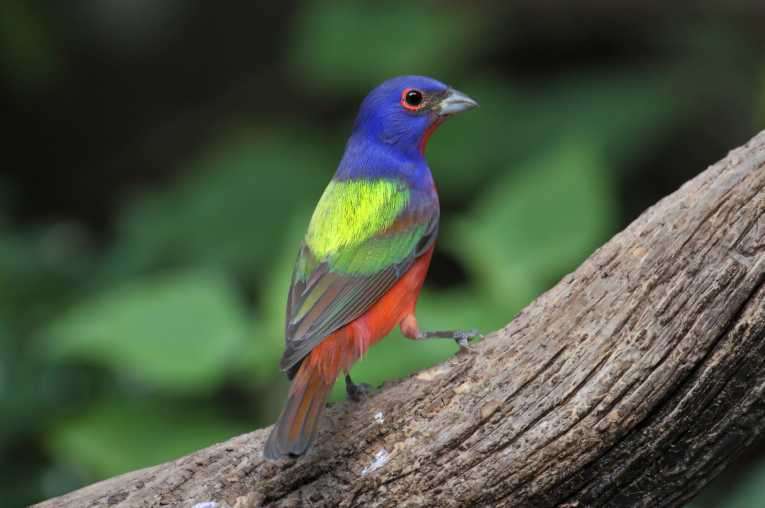Beauty is in the eye of the beholder, it is said - and according to the latest research on bird's perception of color, we are missing out on much of the show, when it comes to dazzling avian plumage. Birds, it seems, can see a vast panoply of colors that reaches far beyond human vision - into the range of the ultraviolet - says a paper out in this month's Behavioral Ecology. But, intriguingly, the rainbow of colors that birds sport has yet to fill out more than a fraction of the spectrum of possibilities.
That's among one of several fascinating facets of avian vision, teased out by a pair of researchers from Yale University and the University of Cambridge, in the UK. Birds have the ability to see in a four-dimensional color space - a so called tetra-chromatic vision - because they have an additional cone type on their retinas, which is tuned-in to the ultra-violet spectrum.
In order to assess how much of that spectrum birds are currently using, the pair, Mary Stoddard of Cambridge, and Richard Prum of Yale, painstakingly scanned and analyzed thousands of images of bird plumage. They then built a mathematical model to populate the full bird color-space, as seen toady, and through their evolutionary history.
They found that of the gamut available for color expression, only a somewhat meager one quarter, to one third, is actually used at present. That fraction has been increasing, though - evolution has been pushing birds towards ever more eye-catching displays, as Prum explained. 'Birds can make only about 26 to 30 percent of the colors they are capable of seeing but they have been working hard over millions of years to overcome these limitations.'
The colors that birds have evolved come from a range of different 'color pots'. There are melanin pigments, which imbue feathers with a hue much like dyes in human cloth; there are carotenoid pigments, which are influenced by the bird's diets; and then there are the structural colors, which add most of the diversity to the bird's color palette.
Quite why bird plumage hasn't added ultraviolet yellows and reds, to the possible color pots to draw from, is not known. Stoppard speculates that these 'out of gamut' colors may be impossible to make with available mechanisms or they may be disadvantageous.'
But the team did confirm that bird colorings are on a par with the color diversity that birds see in flowers - and can even reach beyond them. 'The startling thing to realize is that although the colors of birds look so incredibly diverse and beautiful to us, we are color blind compared to birds,' said Prum.
Top Image Credit: © Steve Byland










